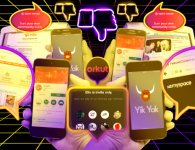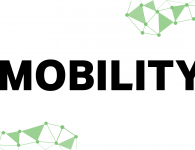

Creativity represents an essential ingredient for any company, regardless of the industry. According to a Forrester and Adobe survey, 82 percent of executives agree that their company benefits from creativity.
But there’s a disconnect.
Leaders understand the power of creativity, but when it comes to practice, they often can’t execute.
Despite the known advantages, 61 percent of executives don’t perceive their companies as creative. In theory, leaders understand the power of creativity, but when it comes to practice, they often can’t execute.
[ Culture change is the hardest part of digital transformation. Get the eBook: Teaching an elephant to dance. ]
Depending on your perspective, you may not automatically associate creativity with IT roles. But think about the creative problem-solving that happens, daily. Technical teams can flourish within a culture of creativity. Use these tips to foster more creativity within your own IT department.
1. Cultivate an innovative climate
Creativity and innovation are inextricably linked. Creativity leads to innovation. When you encourage an innovative environment, you’ll find people are more willing to take risks, especially in structured IT roles.
Author Steven Johnson said: “If you look at history, innovation doesn’t come just from giving people incentives; it comes from creating environments where their ideas can connect.” It’s all about the surroundings – and this doesn’t have to be hard. Consider these simple strategies that will go a long way in helping you create an innovative culture for your IT team:
- Welcome new ideas: Make sure employees feel comfortable approaching you with new concepts. When they do, take time to listen and don’t view it as a disruption.
- Celebrate failures: When experimenting with new processes, make sure your staff knows that failures are a step toward success and aren’t considered a setback.
2. Schedule unstructured time
People in a rut can develop habits that kill off their own creativity.
Routines become commonplace in many jobs, especially in IT roles. In her Harvard Business Review article, Priscilla Claman explains why this is dangerous: “People naturally set their work lives into a groove after a while. In time, that groove can turn into a rut. And people in a rut can develop habits that kill off their own creativity.”
An effective way to avoid a rut and encourage creativity is to mix up routines with a little unstructured time. Google is known for its “20 percent” philosophy, which states that staff can spend up to 20 percent of their time at work on outside projects. While the merits and validity of this concept are debated, as noted in this Business Insider article, the crux of the policy is valuable.
Quite frankly, 20 percent of unstructured work time requires a significant investment that most businesses can’t afford. But you can use the concept in a way that makes sense for your IT department. Maybe it’s a weekly or monthly brainstorm meeting, where you put current work aside and chat about processes, workflows, or other high-level topics. Hold these meetings on rotating days and times to keep things fresh. Even short, unstructured sessions can get the creative juices flowing. You’ll see that translated into other areas of your employees’ work, and it will break up monotony.
3. Try collaborative projects or challenges
I always end up with a more productive team for the weeks following these sessions.
Forbes recently polled technology executives on how to make development teams more creative, and many pointed to the power of collaboration. I would agree with this, but “working together” as a strategy can be fairly broad and easily swept aside. By nature, many IT roles are individualized and don’t require collaboration. But to counter that, you can turn to popular challenges such as hackathons. Whether it’s a day or week-long project, hackathons take unstructured time one step further and force employees to work together to create a product/service or solve an issue. They also typically add an element of friendly competition.
Once a quarter, I break my team into smaller groups and charge them with solving a problem. The teams spend two hours trying to come up with ways to address or solve this problem, which may be related to our market, or it may have nothing to do with our world.
This offers team members an opportunity to work with different people on the team in different ways while having fun. Each team reviews all submitted answers or creations, and the winning team gets to select the next team outing or catered lunch.
This is a relatively simple way to get my team to look forward to a different and fun break in the day, while also recharging the creative juices. I feel like I always end up with a more productive team for the weeks following these sessions.
Again, this might not be something you can do monthly, but quarterly or bi-annual events will still provide intrinsic value to your IT team. Working collaboratively will foster connections and inspire ideation. By spending a significant amount of time together, your employees will also get an outside perspective on their day-to-day tasks, which can lead to even more creative problem-solving.
4. Encourage happiness
Happy employees are more likely to be creative. A positive mood allows the human brain to think more creatively, according to the results of a scientific study in which participants were shown either happy or sad videos before a problem-solving series. As a leader or manager, you have the direct ability to affect your team’s morale.
I always start my monthly team meetings with fun ice-breakers or storytelling so that we get everyone smiling, and hopefully laughing. That way, they are more focused and in a good mental state to discuss what’s going on, where we are going next, and the good things that have happened.
While your workplace can’t be perfect all the time, you can set the tone by having a positive outlook. Lead with optimism and patience. When appropriate, try to bring levity to situations.
Why a culture of creativity should be a top priority
By 2020, 57 percent of organizations expect to use some form of IT automation, according to the 2019 State of IT report from Spiceworks. Advances in technology and AI may be making lower-level positions obsolete, but I believe there will always be a need for some human heart, passion, and skill.
Consider some of our time’s quintessential “tech” people – Steve Jobs and Bill Gates come to my mind immediately. The products and companies they helped build did not appear out of thin air – they were dreamed up, developed, refined, redone, launched, and relaunched.
That requires a mindset that’s open to creativity and innovation – and a culture that fosters and promotes it. To keep pace with the dynamic workforce as well as gain competitive advantages for your company, work to make your IT roles more creative. In the end, this will benefit everyone.
[ Do you make thoughtful decisions? Read also: 4 styles of decision-making: A leader’s guide. ]
read more at https://enterprisersproject.com/rss by Kassie Rangel
Cio









